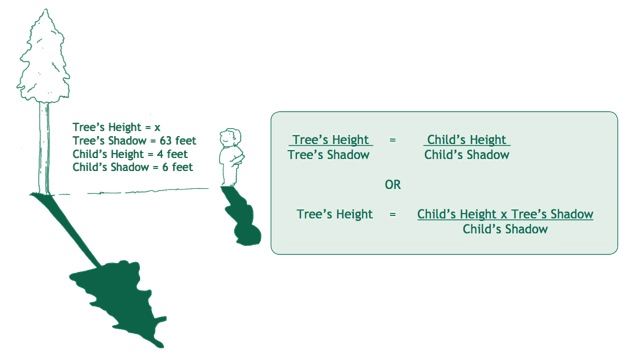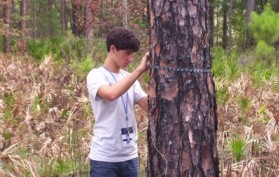Trees come in various shapes and sizes.
In this activity, children will measure trees in different ways and become familiar with tree scale and structure. They will also learn the importance of standard units of measure and measuring techniques.
Doing the Activity
Any time you are outside, select a tree for children to measure.
Begin by asking youth how they might measure something without the proper tools.
Then challenge children to measure small outdoor objects (leaves, branches, rocks) using their own body parts: a foot, hand, arm, or finger.
Guide children to your selected tree and ask them to estimate the following:
- Height
- Circumference
- Diameter at Breast Height (DBH)
- Width of Canopy (or Crown Spread)
Depending on the age and ability of the children, you may want to provide a six inch ruler or five foot piece of string for assistance. You can request that calculations be estimated in body measurements (hand spans, arm lengths, etc.) or accepted units of measure (feet, meters, etc.)
Ask: Why might it be useful to measure trees?
On a sunny day, show children how to measure shadows and use a ratio comparison to determine tree height. The mathematical proportions are outlined in the box below. Invite children to practice using the illustrated example.

Download the Activity
Descarga la actividad en español: ¿Qué tan grande es tu árbol?
Get the Full Activity
This family activity is adapted from Project Learning Tree’s PreK-8 Environmental Education Activity Guide which can be obtained through an in-person professional development workshop or online course.
All PLT activities are copyright protected. Please remember to reproduce responsibly.
Click here for our Content Reprint and Adaptation Policy.



